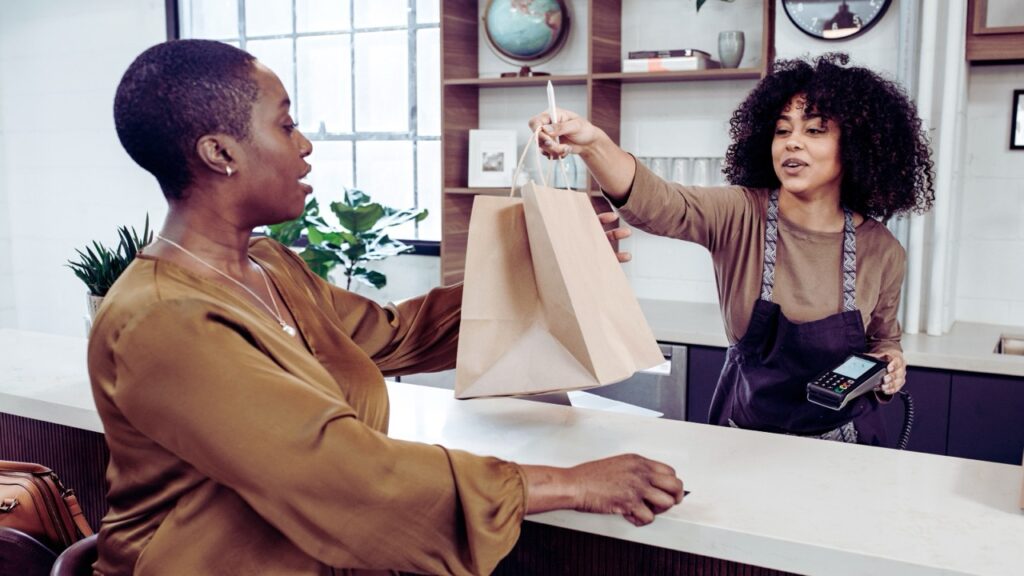Emerging brands know the importance of in-store execution. But when it comes to field support, most are forced into a no-win choice: rely on syndicated reps who are stretched thin across dozens of SKUs, or hire full-time field team members who cost more than the business can sustain.
Neither option works for the $5M–$25M revenue stage—where brands are scaling fast but still watching every dollar. That’s where the concept of a shared retail force is gaining momentum. It’s not a stopgap. It’s a strategic middle ground—built for brands that need accountability and visibility at shelf but can’t justify building a full team from scratch.

Why Field Support Falls Apart for Growing Brands
The mechanics of retail success are simple in theory. Get product on shelf, support it with merchandising and education, and generate enough sell-through to drive reorders. But the gap between sell-in and sell-through is where most brands struggle.
Syndicated field teams are the default option for many emerging brands, but these reps are typically handling too many categories at once. They may visit your store, but they’re unlikely to prioritize your brand—especially if someone else is paying more for placement or pushing higher-volume SKUs.
On the other hand, building an internal field team gives you more control and brand fidelity. But the costs add up quickly: salaries, benefits, travel reimbursements, sampling programs, and management overhead. Most brands under $25M just can’t justify that kind of spend, especially when their distribution is still regional.
That leaves many teams with no clear owner for execution. Sales assumes the distributor is handling it. Marketing assumes sales has a plan. And store-level performance stagnates while everyone waits for someone else to act.
What Is a Shared Retail Force—and Why It Works
A shared retail force sits between those two extremes. It’s a modular field team structure where multiple complementary brands share dedicated reps in key regions. These reps are trained on each brand, assigned to specific retail accounts, and held accountable for outcomes like display compliance, out-of-stock resolution, and shelf presence.
What makes this model different from syndicated reps is the level of alignment. Brands are selected based on category, retail footprint, and go-to-market strategy. The goal is synergy—not just efficiency. A single rep might represent a few better-for-you snack brands that all live in the same set at Sprouts or Whole Foods.
Because the brands overlap in-store, reps can work efficiently while still representing each product with care. And because those reps are managed centrally by a third party—or even in-house across a coalition of brands—they’re more likely to follow through on priorities. Store visits are tracked. Photos are taken. Display issues get addressed.
Most importantly, you get real-time visibility into what’s happening at shelf—without paying for a full headcount.

The Strategic Advantage for Emerging Brands
Shared retail forces are especially effective for brands that are post-launch but not yet scaled nationally. These are companies that have 50 to 500 retail doors, often concentrated in a few metro areas. They’ve proven product-market fit and secured placements—but are now struggling to drive consistent performance across their retail footprint.
For these brands, field coverage isn’t optional. It’s what separates fast-growing CPGs from those that get discontinued after one rotation. A shared retail force allows you to show up at shelf consistently without overspending, enabling a faster feedback loop between the field and headquarters.
When structured correctly, this model can also support short-term promotional pushes or seasonal resets. Want to boost display compliance during Q4? You can scale up hours for just that window. Need to test pricing changes in one chain? Reps can collect data directly from store managers.
Flexibility is a built-in feature—not a compromise.
What to Watch Out For
While the shared model offers many benefits, it’s not plug-and-play. Brands need to be thoughtful about who they partner with and how responsibilities are structured.
First, make sure the other brands in the shared model actually align with yours. If you’re selling a premium refrigerated beverage, you don’t want to share a rep with frozen entrees or center-store shelf staples. That mismatch confuses retailers and sets reps up to fail.
Second, vet the training and reporting systems. Are reps actually prepared to speak about your brand and troubleshoot issues? Is there a clear system for uploading store photos, logging action items, and reporting back in real time?
Finally, look at the incentive structure. Are reps measured on activity—like number of visits—or outcomes, like improved velocity, display compliance, or reorder rates? Without aligned KPIs, the model quickly loses value.
When This Model Isn’t a Fit
Not every brand should pursue a shared retail force. If your product requires deep education, like supplements with complex functional claims, it’s hard to share reps without diluting your message. The same goes for ultra-premium products that need elevated storytelling or custom training.
Brands in fewer than 30 retail locations also may not benefit from shared coverage, since the density isn’t there to justify dedicated time. And if your category doesn’t match well with others—say you’re in a niche channel or targeting a highly specialized buyer—the shared model might introduce more confusion than clarity.
Show Support
If you’re an emerging brand trying to stretch every marketing dollar while still driving real in-store results, the shared retail force model may be the best path forward. It gives you the power of a field team without the overhead, and the flexibility to scale as you grow.
At Ace Talent Curators, we work with growing brands to design modular field staffing strategies that are tailored to stage, footprint, and channel. Whether you’re launching in one region or managing hundreds of doors across the country, we can help you build a solution that actually drives sales—not just visits.
Need help evaluating your retail model or finding the right rep partners?
Reach out here and let’s talk about how to make your in-store presence work harder.
